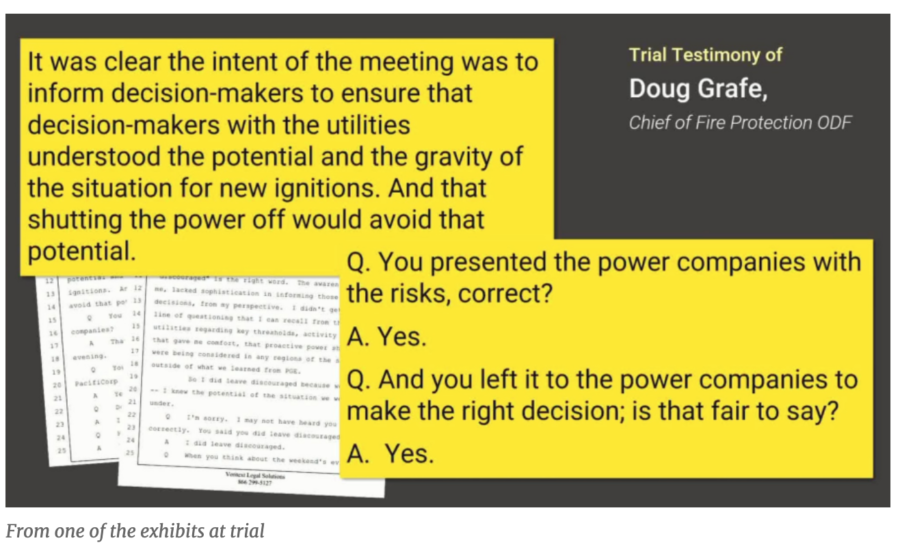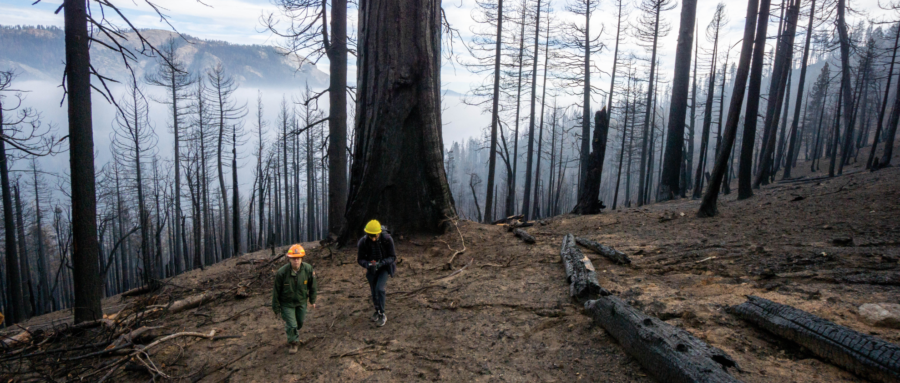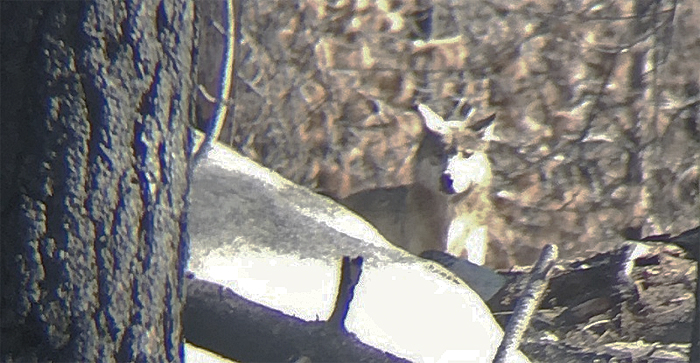PacifiCorp, an electric utility provider in the Pacific Northwest that was found guilty of gross negligence and recklessness in the 2020 Labor Day fires in Oregon, has agreed to pay $299 million to victims of fires in southern Oregon, according to a report by the Oregonian.
PacifiCorp, which owns Pacific Power, lost a similar lawsuit back in June for causing fires in the northern part of the state. The jury in Multnomah County Circuit Court in Portland found the utility liable for four of the Labor Day 2020 fires, after its powerlines ignited fires that burned about 2,500 properties in western Oregon. The 12-person jury determined that PacifiCorp was negligent for causing the Santiam, Echo Mountain, South Obenchain, and 242 fires after a 7-week class action trial. (The final verdict in that trial is posted on our DOCUMENTS page.)

A year ago, PacifiCorp settled another case out of court with two families who sued over the Archie Creek Fire, which burned more than 130,000 acres in Douglas County in 2020.
Tuesday’s settlement is unprecedented in Oregon and wraps up a 3-year legal battle that has financially and emotionally exhausted residents who lost homes and property in the firestorm.
The Archie Creek Fire leveled communities along the North Umpqua River east of Roseburg, and it was just one of numerous huge fires ignited during the Labor Day weekend windstorms.
The Labor Day fires collectively burned more than 1.2 million acres in Oregon, destroyed upwards of 5,000 homes and structures, and killed nine people. PacifiCorp, Oregon’s second largest utility, did not shut down power to any of its 600,000 customers during the windstorm — despite the fact they were repeatedly warned by emergency officials to power down their lines, which were implicated in six separate fires.

Some 220 families and individuals sued, alleging negligence that caused the Archie Creek Fire. The $299 million settlement amounts to an average of about $1.35 million per family in the lawsuit, though individual claims vary widely. Victims will pay attorneys’ fees, estimated at 30 to 40 percent of the settlement. The settlement agreement avoids a consolidated trial that was scheduled for January 30 and shields PacifiCorp from much larger jury awards that would likely have included punitive damages.
The company had asked state regulators to protect it from the costs of future lawsuits over destructive wildfires; in the request to the Oregon Public Utility Commission in June, PacifiCorp also wanted ratepayers to pay for $90 million the jury found the company liable for. That request drew harsh criticism from wildfire victims, lawyers, and ratepayer advocates, who questioned the company’s motives and the proposal’s legality.
According to a report by The Hill, PacifiCorp said the settlement amounts are consistent with those previously estimated and established in accounting reserves for the wildfires. “PacifiCorp has settled and is committed to settling all reasonable claims for actual damages as provided under Oregon law,” the company said in a statement.

Plaintiffs’ lawyers in the Labor Day fires’ litigation have criticized the utility for legal obstruction — instead of promptly settling with victims. They’ve sought legal sanctions against the company for withholding information about the origins of the fires, denying access to investigations after the fires, and limiting what employees could say in depositions.

The company still faces numerous lawsuits related to the 2020 fires, including a trial scheduled for January for seven timber companies that lost property in the Archie Creek Fire — their claims were not part of this week’s settlement.
Multnomah County Circuit Court Judge Steffan Alexander has scheduled three trials early in 2024 to consider damages for another 20 plaintiffs; he has ordered the company and more than 1000 other plaintiffs into mediation — which could dramatically increase the utility’s financial liability. Total damages sought in lawsuits related to the 2020 fires is about $8 billion.

 She said some Maui agencies have cooperated with investigators, but that subpoenas were issued to the Maui
She said some Maui agencies have cooperated with investigators, but that subpoenas were issued to the Maui 



